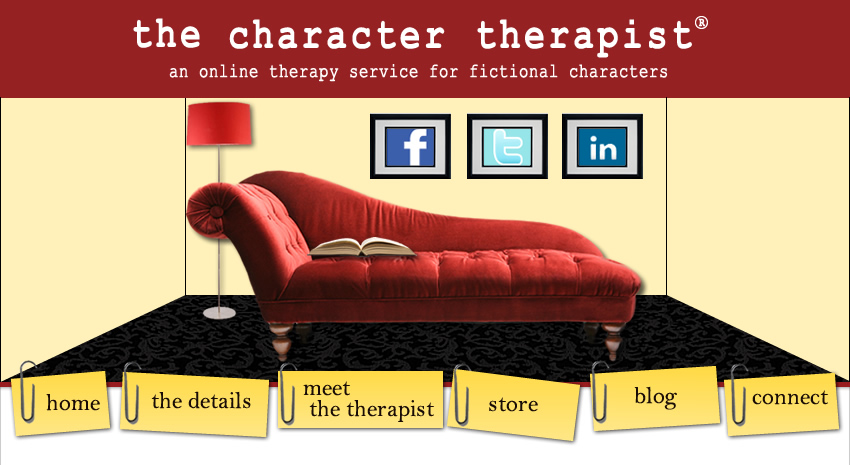Now that we've covered the needs, how can you be sure which motivation your character has? Easy! Take a part of the actual test McClelland used to solidify his theory and determine a person's need hierarchy.
It's called the Thematic Apperception Test. It's a set of 31 black-and-white picture cards that show emotionally powerful situations. You can see some of the examples I've provided. If I were to have your character in my office, I'd present these pictures one card at a time and ask him or her to make up a story about each situation. The spontaneous stories created by a person will give an indication which Need is greatest in their lives because the character would project that need into the story.
Sit yourself down, and, under the guise of being your character, think up stories for the following cards:
Card 1:
Card 2:
Card 3:
Card 4:
Card 5:
Card 6:
Card 7:
Card 8:
Card 9:
For an example, let's take the last card shown, a picture of a man and woman, the man with his face turned away. Let's say Character A looks at the card and says, "This is a married couple who just had a fight." Character B looks at it and says, "The man is mad because the woman got a promotion he thought he deserved."
The stories don't have to be long and convoluted. The above examples are one sentence long, but they clearly reveal a need tendency. Character A is high Need for Affiliation. How do I know this? The character mentioned the association between the two people as intimate--"a married couple." The character further mentioned that they had a fight, and what's a fight, but a barrier to affiliation and connection?
Character B is high on Need for Achievement. Very likely, were I to pry, this character probably got overlooked for a promotion himself, and was quick to project that experience into the picture. Achievement, measured by advancement up the corporate ladder, was something Character B highly desired, so therefore would be more prominent in his stories.
Honestly, you'll see a trend start to emerge and once you do, the really fun part happens: you take their motivational need and develop barriers (plot points) to thwart them from fulfilling that need. Needs affect a person's behaviors because they act in such a way as to meet those needs--it is their prime motivator. In order to ratchet up the tension, you'll know exactly what to throw their way once you determine how important Power, Achievement, or Affiliation are to them.


















7 comments:
This post was very timely for me. I'm writing character analyses today. Thanks, I'll be back again and again. :)
Strangely enough, I've never done well with the TAT.
Thanks for sharing:)
Interesting post. It's set a couple of roleplayers off on a tangent too. Juliette Wade at TalkToYoUniverse was host to the thoughts, and Jaleh B has a post on the subject up at Ex Libris Draconis. It might be another useful approach to consider.
http://talktoyouniverse.blogspot.com/2011/01/your-characters-motivating-need.html
http://exlibrisdraconis.blogspot.com/2011/01/brainstorming-plot.html
Jennifer Shirk sent me over and I'm glad she did. What a neat concept. Looking forward to reading your other posts on the subject:)
This was a very good series. Well said all around, and even though I thought was good at motivation, I'm sure I'm a better writer for having read this.
thank you M Tate. that's the highest praise i can receive for what i do here on my blog. :)
kara and porky - thanks so much.
Post a Comment
Both comments and questions are welcome. I hope you enjoyed your time on the couch today.